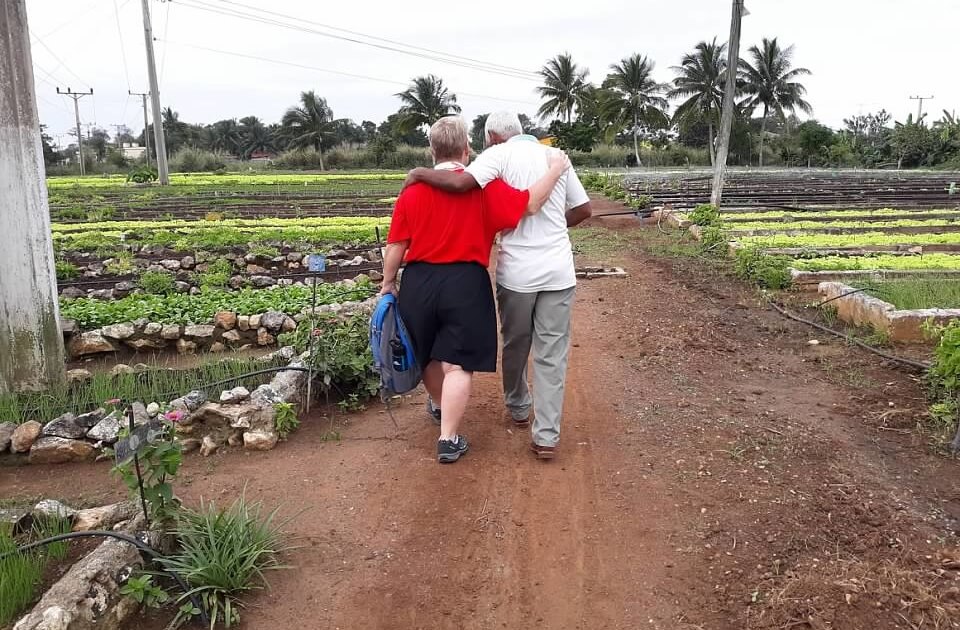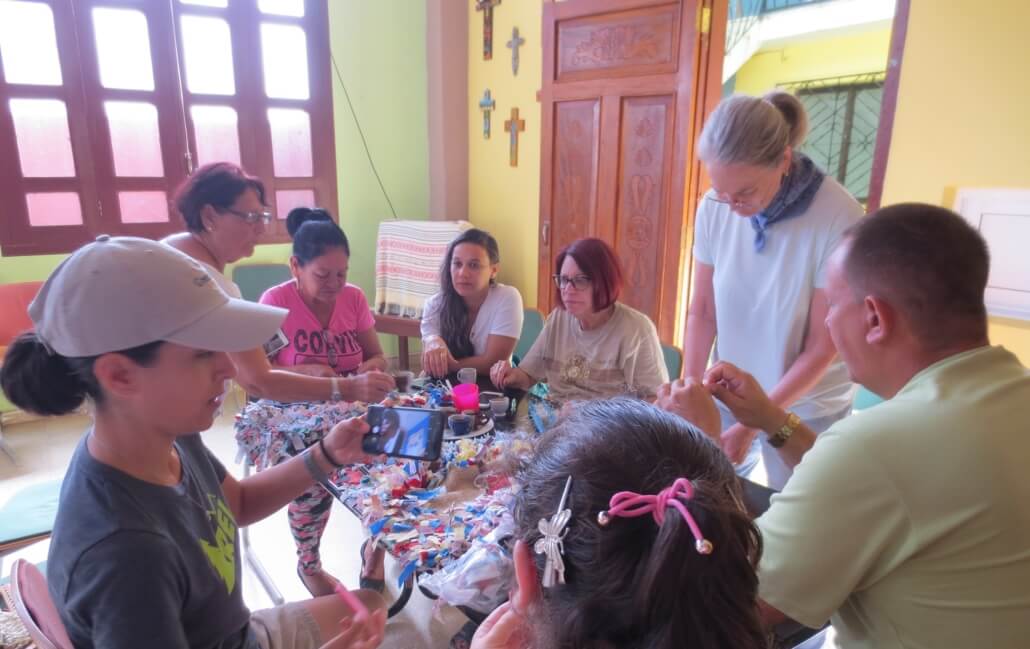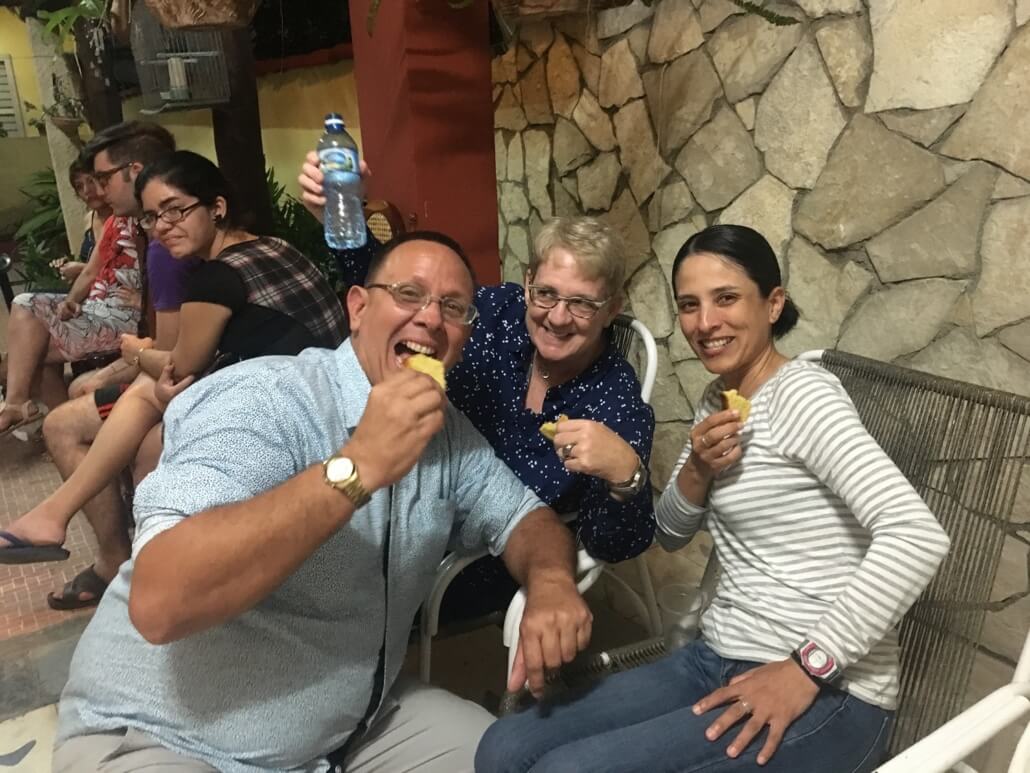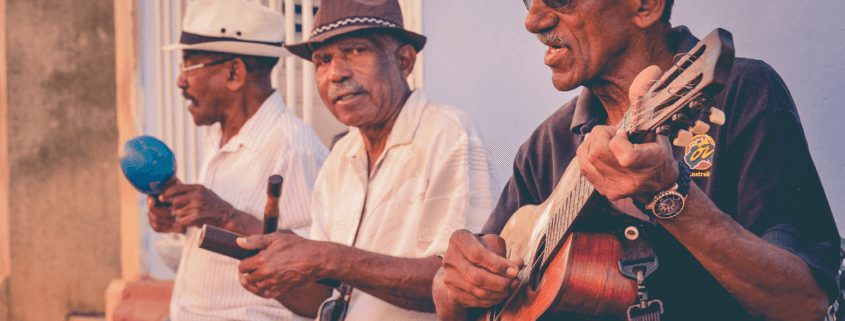Welcoming the New Year as a Volunteer in Cuba
Six-time Global Volunteer Ann Sweeney has served in Cuba three times – including twice for New Year’s celebrations, where she enjoyed Cuban graciousness and tradition. She writes of making connections and nurturing friendships as the focus for Cubans at this very special time of year.
By Ann Sweeney
After the first train whistle blasted in the early morning hours this New Year’s Eve day, the Ciego de Ávila community in Cuba came alive with numerous opportunities for reflection on the past year along with consideration of dreams, hopes, and resolutions for the new year. Anticipation and excitement permeated the air in all corners of the city.
Over the last few days, the city of Ciego de Ávila burst with representations of the phrase: Out with the Old and In with the New! As this is late December, one year is nearing an end, and another year is about to begin. Throughout the community, enthusiasm builds for bringing in the new year with family and friends.
Families expand as family members return from school or work in other parts of the island, from living in the United States, and from living in other countries. Spending time together with extended family over the new year holiday seems to be one of the most important periods of the year in a rural community like Ciego. Doors to homes open wide, music plays, voices resonate, and smells from food cooking waft along every street. Families enjoy the simple pleasures of conversation, dancing, food, laughter, and music. Joy abounds with visitors greeted with open arms and invited to join the gatherings.

Preparations for holiday meals are evident as team members from Global Volunteers travel to their morning activities of English conversations in the community center, crafts and sewing at the women’s crafts cooperative in the church, and gardening in the community garden. Local Cubans move hurriedly to pick up final items for holiday gatherings, yet still take time to greet each other and the American volunteers. Horse-drawn carts with drivers shouting “yuca for sale” traverse the streets. Peddlers loaded with garlic and onions for sale pass frequently on bicycles or foot. Additional carts with other vegetables for sale are noticeable in various places throughout the city. Decorated sheet cakes that are a treat for the new year are visible; people gather at bakery counters or line up by bakery carts with shelves of cakes for sale. Agile bicyclists ride with one hand on handlebars and the other holding a cake aloft in the hot sun, making their way to a holiday destination.

A main feature of the holiday meal is pork. A whole live pig remains tethered to a tree with a for sale sign on a stake in the ground. Various cuts of pork for purchase hang on display or on tables around the city. Many of the local Cuban people readily share their favorite methods and recipes for cooking pork. Whole pigs roast on a spit or grill. Other parts of butchered pigs roast in large cauldrons or ovens as an alternative to a spit or grill. Cumin, garlic, onion, and orange juice add flavor to the pork in the big cooking pots. Some local people invite Global Volunteers into their homes to observe cooking underway and share samples of pork with the volunteers or invite them to return when the food is ready. The Ciego community is so welcoming, with such affection, graciousness, and generosity that everyone quickly becomes family. The language is a mix of English, Spanish, and many gestures. Hugs, kisses, and smiles flow effortlessly. Perhaps this is one important meaning of people-to-people relationships between Americans and Cubans. During this holiday period, the focus is on making connections and nurturing friendships.

“Perhaps this is one important meaning of people-to-people relationships between Americans and Cubans. During this holiday period, the focus is on making connections and nurturing friendships.”
– Ann Sweeney
For the second year in a row, Señora Yolanda graciously agreed to host a New Year’s Eve fiesta for the Global Volunteers and other guests in the courtyard at the back of her home on the main road in Ciego. Conversing, snacking, playing games, listening to music, including a live performance from a local trumpet player discovered by team leader Julie, and a bit of dancing filled the hours before midnight.


In the spirit of honoring a Cuban tradition of burning a stuffed doll to end the year, creative juices flowed to create a life-sized muñeco (“doll” in Spanish). Comprised primarily of worn clothes and magazines, the muñeco held up as it was carefully moved to the curb on the street in front of the casa of Señora Yolanda. Burning muñecos in neighborhoods is one way that Cubans purge the old year and welcome a new one.
As the new year approached, the volunteer team and friends raised glasses to toast the new arrival! The lighting of muñecos appeared in unison up and down streets at almost midnight. People enthusiastically streamed out of Casas, music played even louder, and cheers resonated throughout neighborhoods to recognize the new year. With very few streetlights and clear skies, the burning muñecos under constellations of stars presented quite a remarkable sight.


As fires burned in the streets, local Cuban people started throwing buckets of water into the streets as another way to clear out the old year and welcome the new year. Then, more people began vigorously wheeling luggage around city street blocks in another Cuban tradition related to the desire to travel in the new year. Celebrations, high spirits, music, and saludos (greetings) continued well into the morning as the first signs of dawn appeared.
After a few hours of rest, the pace of January 1 slowed a bit for the Global Volunteers and many in the Ciego community. Even the morning train whistle sounded more muted in the early hours. Remnants of the burned muñecos lined the street – including one partially burned shoe from the doll created by the volunteers.

Morning activities on this first day of the new year included conversational English with dedicated students in the community center. Some of the team members who regularly went to the garden wanted to explore the women’s crafts cooperative. Several local Cuban women and the church manager enthusiastically embraced the volunteers who worked alongside the women in a room of tables in the back of the church. Creativity and ingenuity mixed with lots of conversation, gestures, and laughter as the seasoned local people patiently helped the newcomer volunteers make handicrafts. Projects underway included aprons, baby clothes, bathmats, bread holders, hats, kitchen items, and scarves. The Cuban women readily accepted any ideas for crocheting, knitting, sewing, or any other craft that could result in selling an item to benefit the women’s cooperative.






An afternoon walk around Ciego de Ávila revealed quieter streets, less traffic, and fewer people outside while the music played on. After a flavorful dinner, conversational English began and ended for another day – the first full day of the new year.
The Cuban people seemed open to sharing what is important to them, welcoming volunteers into daily activities, introducing family and friends, and helping visitors broaden their understanding of local culture. This new year holiday personified the desire to build bridges through the local Cuban people’s endless hospitality and the American volunteers’ willingness to immerse themselves in this rich culture. Single words used by the volunteers to describe the experience in Cuba included: amazing, authentic, fulfilling, genuine, magical, mysterious, surprising, and wonderful.



“This new year holiday personified the desire to build bridges through the endless hospitality of the local Cuban people and the willingness of the American volunteers to immerse themselves in this rich culture.”
– Ann Sweeney
As this entry concludes, the train moves along the track with robust blasts of its whistle leading the way. Perhaps another phrase in Ciego is: What is Old is New Again! ¡Feliz y Próspero Año Nuevo!

You may also like this story on volunteering over Christmas in Cuba:




Leave a Reply
Want to join the discussion?Feel free to contribute!